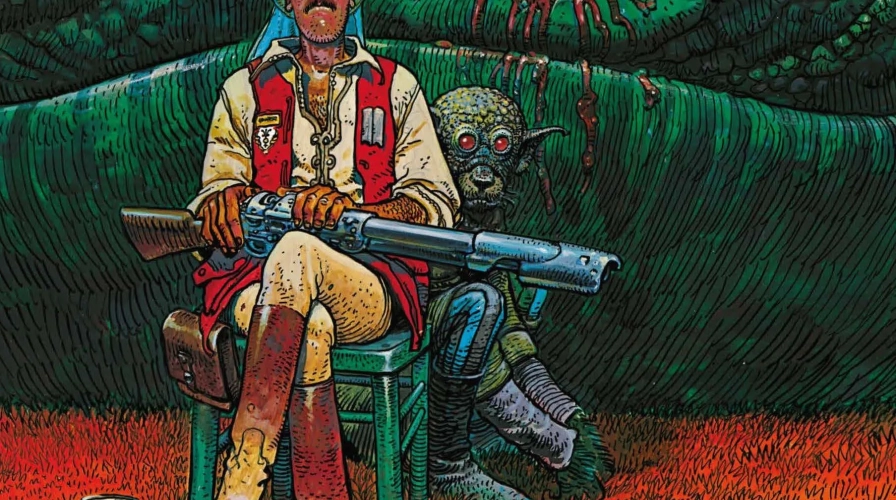Les Humanoïdes Associés Celebrate 50 Years with Opus Humano
In five issues, Les Humanoïdes Associés commemorate their 50th anniversary. Opus Humano allows readers to relive an era with legendary creators and discover lesser-known artists. The first volume explores the early years between 1975 and 1985.
Opus Humano: Back to the Roots
Emulating the successful format of the Métal Hurlant magazine, Opus Humano moves away from traditional albums, leaning towards the "mook" format—dense magazine-like books sold in bookstores. With a softcover and nearly 300 pages, this edition focuses primarily on comics, with only a few accompanying articles. Each featured creator is introduced with a biographical and personal note, often written by the Humanos’ director Fabrice Giger or current Métal Hurlant editor Jerry Frissen.
Throughout its pages, connections emerge between these creators. Most studied graphic arts but lacked formal training in comics. They learned through self-taught methods, personal practice, or mentorship from older masters. However, they are all men, resulting in a heteronormative and occasionally machismo perspective. Only Armalite 16 by Michel Crepin places a woman at the center of a post-apocalyptic world.
The comics reflect the concerns of their time. The artists’ influences are apparent: dreamlike science fiction, American noir novels, and even French noir writers like Jean-Patrick Manchette. Antiheroes often grapple with challenges much greater than themselves, with male protagonists frequently portrayed as clumsy. Stories such as The Revenge of Arn revisit the Conan archetype, while other themes remain relevant today, like racism in White Nightmare and humanity’s failures in The Runts of Gillon.

The beginnings of a myth in Opus Humano 1975–1985.
A Journey into the Past
Fabrice Giger’s preface revisits the origins of the publishing house, highlighting a generational shift as several creators broke away from the conservatism of Pilote magazine. Moebius, Druillet, Dion, and Bernard Farkas first founded Métal Hurlant in January 1975. The creative explosion of the era is vividly depicted in biographical articles. This period often saw creators launching their own magazines: Pilote, L’Écho des Savanes, and, of course, Métal Hurlant, which later inspired its American counterpart, Heavy Metal.
Opus Humano offers the publisher a chance to dig into its past and unearth hidden gems. The stories vary in length, from a few pages from Métal Hurlant to over 50 pages, such as Kolstov’s Hideout by Ceppi.
Prominent sci-fi illustrator Caza is spotlighted with a wordless story in a version never before released as an album. This volume highlights the profound influence of Moebius, who appears on the cover and contributes ten stories. This period marks a mature phase for Les Humanos, producing masterpieces such as The Incal with Jodorowsky. Other standout works include White Nightmare, a stark depiction of racial violence; Ballad, a fatal journey through jungle and savanna; and Major Fatal, an imaginative tale filled with neologisms in an improvised universe. Particularly impressive is Without Words, depicting a dual escape, while Ktulu dazzles with its modern colorization. Readers are also introduced to lesser-known creators of the time, such as Alias, or once-prominent figures now less remembered, like Paul Gillon. Jean-Claude Gal brings a classic style reminiscent of Burne Hogarth’s work on Tarzan.
Published by Les Humanoïdes Associés, this first volume of Opus Humano underscores the publisher’s legacy by showcasing major artists of the era. It doesn’t just reflect on the past, though—filmmaker Denis Villeneuve highlights the contemporary influence of these works.
Discover more of the richness from Les Humanos with articles like The Abyss of Resurrections and Birdking.




Comments (0)